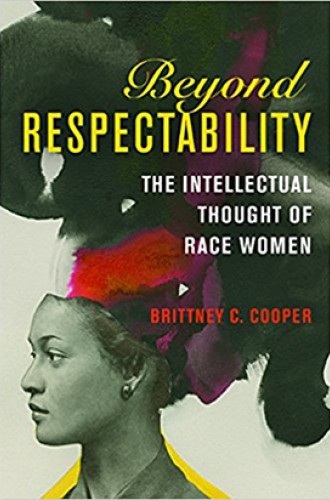A lineage of black female scholars
Black women's contributions continue to be rendered invisible. Brittney Cooper offers a critical intervention.
As a student in academic theology I quickly learned the significance of intellectual lineage. People whose theology was shaped by Karl Barth called themselves “Barthians.” Those who organized their theological or political commitments around the work of Michel Foucault were known as “Foucauldians.” I wasn’t in graduate school more than a year before I had been exposed to several different readings—and rereadings and readings of the rereadings—of some aspect of “Du Boisian” thought or politics. While my courses may have mentioned or given a reading to a woman of color, they were never framed around the theoretical assumptions or contributions of black women. There was no lineage related to black women.
The question of black women’s representation in classrooms, scholarship, and society is not new. What Brittney Cooper offers so brilliantly is a critical intervention in a time when black women’s contributions to American life continue to be rendered invisible or misrepresented. Immersing readers into the intellectual thought of black women activists such as Mary Church Terrell, Pauli Murray, and Toni Cade Bambara, Cooper presses us past the question of representation into an understanding of the forces and patterns that diminish the significance of marginalized people.
Cooper frames her book with a “Cooperian” approach, building upon the theory and practice of another Cooper, Anna Julia Cooper, an early 20th century black scholar and activist. Brittney Cooper argues that a critical difference between the approach of A. J. Cooper and that of her more celebrated contemporary W. E. B. Du Bois is in how they balance the competing identities of race, gender, and class. “In [A. J.] Cooper’s account of racial identity, a Black female experience of embodiment brought these competing national identities into generative tension, whereas in Du Bois’s account, competing identities threatened to dismember the Black self.” Brittany Cooper’s use of A. J. Cooper highlights a theme that resounds throughout the text: black women thinkers navigated multiple points of marginalization.
Society’s refusal (even within the male-dominated black scholarly community) did not prevent black women from doing intellectual work. They used whatever means were available—memoirs, speeches, lists, and even intellectual genealogies—to shape discourse about issues that were fundamental to the black community. Even more crucially, this work was necessarily embodied. These women refused to leave the realities of their bodies behind in their thinking and writing. The result is a legacy of “bodily discourse,” a refusal to distance intellectual questions from lived realities. Experience is not something to get past, but a fundamental point of inquiry. In a society that sought to reduce black women to sexualized objects or render them invisible, these thinkers had to think through their gender, their class, and their sexuality to make sense of themselves in the world.
The intellectual and communal labor of black women intellectuals demonstrates a sobering and liberating truth: we cannot escape the contingencies of our bodies or the discourses that shape them. Yet it is through our bodily contingencies that we can truly find freedom. For the black women in Cooper’s study, their embodied intellectual discourse created deeper commitments to building movements, developing relationships, navigating institutions, and mobilizing communities. Cooper challenges us to consider what any academic project might look like if it were to wrestle with the bodily and contextual nature of our intellectual lives.
In a way, Cooper is giving us a genealogy of #blackgirlmagic, the recent hashtag used to highlight the accomplishment and brilliance of black women. Not simply a signal of innate natural ability, #blackgirlmagic takes up the potentially anti-intellectual notion of magic and recasts it as the glorious confluence of insight gleaned from study and skill wrought from practice, oriented toward an unrelenting commitment to the beauty, thriving, and freedom of individuals and their communities.
By moving “beyond respectability,” Cooper’s black feminist thought takes us into the constructive possibility that has marked so many black women’s lives. This possibility is rooted in bodies that make room for others, grounded in dignity and the recognition of their power, wisdom, and worth. Connecting this legacy to our current moment, Cooper reminds us:
In the streets, in the academy, and online, Black women thinkers continue to reimagine and reshape the terms upon which Black women’s knowledge production takes place. . . . [The Movement for Black Lives] is inherently Cooperian in its insistence that Black women’s bodies and lives (cis and trans) offer a space of possibility and place through which to cathect our best thinking about how to get free.
In our current moment, we are faced with complex questions about the relationship between intellectual work and practical community building, the balance between difference and a sense of community, and how to think about human life and flourishing. Cooper shows us that there have been women thinking about these questions all along.






